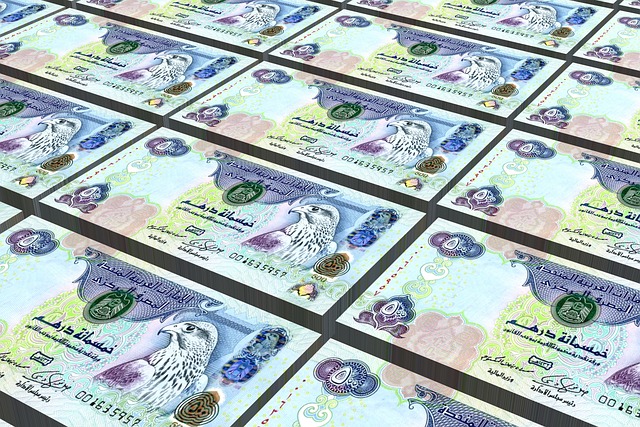Privacy will unlock blockchain’s business potential
Opinion by: Eran Barak, CEO at Midnight It’s been almost 16 years since blockchain emerged from its esoteric fringes to enter global discourse, evidenced most recently by continued backing from Wall Street incumbents. Despite this remarkable ascendancy, the unfortunate truth is that this technology has yet to realize its true business potential. A core challenge persists: Too much sensitive data remains publicly unshielded.The crux of the issue is that companies must keep business data confidential, and people strive to safeguard their personal information as best they can. Once data is put on a public blockchain, however, it becomes irreversibly and indefinitely exposed.Even if a business takes every possible precaution to conceal data, mistakes made by others or vulnerabilities in the system can expose sensitive onchain data or metadata, including participants’ identities. This can lead to privacy breaches, compliance violations or both, undermining the foundational assumption that blockchain is trusted and underscoring the importance of robust measures to protect sensitive data.On the other side of that coin, concealing activity on a blockchain can open the door to money laundering, triggering negative government responses. Instances in which this has occurred have led to a false impression that governments oppose Web3 privacy, a criterion businesses fundamentally need for them to adopt the technology. From whichever angle we look at it, maintaining privacy onchain is a real and complex issue for Web3. Until we solve it, businesses will not and should not be expected to cross the chasm. The belief that governments oppose privacy on the blockchain is wrongWeb3 entrepreneurs have grown to fear that building decentralized applications and businesses that provide financial anonymity could land them in regulatory trouble. Just look at Samourai Wallet, whose co-founders were charged with money laundering, or Tornado Cash, whose developer was sentenced to 64 months in prison for similar reasons. These responses have led to a consensus that governments are opposed to privacy altogether when it comes to blockchain. Recent: AI agents and blockchain are redefining the digital economyThis couldn’t be further from the truth. Governments don’t oppose privacy but mandate it across industries. Data protection laws, like the General Data Protection Regulation or the Health Insurance Portability and Accountability Act, are in place to ensure businesses protect our customer data from misuse and security threats.The real issue these high-profile cases reveal is that Web3 measures to protect data have created opportunities for misuse, enabling the facilitation of criminal activities that have understandably raised serious concerns on behalf of governments. Blockchain data protection capabilities should not undermine established cross-jurisdictional laws safeguarding the global community from terrorism, human trafficking, fraud and other criminal offenses. This begs the question: What does privacy, done right, look like?Selective disclosureWhen it comes to using blockchain, protecting sensitive data is typically accomplished by either keeping the data offchain, or encrypting data onchain. The latter is not durable privacy given quantum computing’s rapid advances in cracking encryption. The advent of zero-knowledge (ZK) technology, a complex cryptographic technique, allows users to ensure sensitive data remains offchain by sharing attestations about the validity of the data instead. In Web3, ZK has emerged as a transformative way to enhance privacy as it enables untrusted parties to validate that a transaction has occurred without sharing any information about the transaction. Decentralized applications can exercise selective disclosure by choosing between putting data onchain (full disclosure), putting it onchain with encryption (disclosure via viewing keys) or using ZK to only publish attestation about the data (offering utility without any disclosure). Selective data disclosure only solves half of the puzzle. It was not designed to account for metadata.The next privacy frontierMetadata, the information surrounding our data, is an under-discussed component of blockchain’s exposure of sensitive information; it can be used to make inferences, creating an added layer of vulnerability even when the data itself is concealed. For example, through transaction metadata, investment and trading strategies can be inferred in addition to other behavioral patterns. For businesses, the implications of this can be detrimental to their growth and ability to stay ahead of competitors. They can’t afford to have trade secrets and strategies, or even the identities of other parties they are transacting with, made public.The need to protect metadata and remove the ability to make inferences is paramount to security and can be addressed using a private token. Such capability can, however, be easily misused for money laundering.If using a private token is not the solution, and using a public token does not provide sufficient levels of confidentiality, then the way to solve this challenge is to rethink Web3’s approach to protecting metadata altogether. We need to combine the benefits of both approaches, effectively creating a dual-asset system in which a public and a private token are used. Each asset functions independently, meaning specific restrictions can be placed to prevent illicit activities such as money laundering while retaining all the benefits.A powerful frameworkThe dual-asset system enables confidentiality without the ailments shielding metadata usually brings, making compliance and business policy enforcement possible. By combining this tokenomics structure with selective disclosure, privacy and regulatory compliance can coexist on the blockchain, which will have resounding effects on adoption and innovation.Opinion by: Eran Barak, CEO at Midnight.This article is for general information purposes and is not intended to be and should not be taken as legal or investment advice. The views, thoughts, and opinions expressed here are the author’s alone and do not necessarily reflect or represent the views and opinions of Cointelegraph.
Nasdaq seeks SEC approval for Grayscale’s Avalanche ETF listing
US stock exchange Nasdaq submitted a filing to the US Securities and Exchange Commission (SEC) seeking permission to list Grayscale Investments’ spot Avalanche exchange-traded fund (ETF).The document, filed on March 27, asks for a rule change to list the Grayscale Avalanche Trust (AVAX). The derivative product in question would be a conversion of Grayscale Investments’ close-ended AVAX fund launched in August 2024.Grayscale said on its website that “its SEC-reporting Products present a strong case for uplisting when permitted by the U.S. regulatory environment.” The firm explained that, following the conversion, “the arbitrage mechanism inherent to ETFs would help the product more closely track the value” of the assets.At the time of publication, the Grayscale Avalanche Trust holds $1.76 million worth of assets under management. The current net asset value per share is $10.86 for just over 0.49 AVAX per share, worth $10.11 according to CoinMarketCap data, which puts the fund’s current market price at a 7.4% premium to the value of its underlying assets.Related: NYSE proposes rule change to allow ETH staking on Grayscale’s spot Ether ETFsGrayscale expands crypto ETF offeringsGrayscale’s website lists 28 crypto products, of which 25 are single-asset derivatives and three are diversified. The firm is among those currently waiting for the approval of its XRP spot ETF, as well as other products.Other examples include its spot Cardano ETF filing and its Litecoin Trust conversion to an ETF. These filings also follow the company’s successful conversion of its Ether and Bitcoin close-ended funds into spot ETFs.In 2024, Grayscale Investments also announced the conversion of a part of its Bitcoin and Ethereum ETFs into spinoff products. The new Grayscale Bitcoin Mini Trust (BTC) and Grayscale Ether Mini Trust (ETH) feature lower fees and follow their derivatives, losing capital to more cost-effective options.Related: BlackRock Bitcoin ETP ‘key’ for EU adoption despite low inflow expectationsUnited States Bitcoin ETF assets under management by product. Source: MacroMicroData reported at the end of 2024 shows that over $21 billion has been withdrawn from the Grayscale Bitcoin Trust (GBTC) since its launch on Jan. 11, 2024. This made it the only US-based Bitcoin ETF with a negative investment flow at the time.This product offering has the highest management fee among all the products, set at 1.5% per annum. The other ETFs range from 0.15% for the Grayscale Bitcoin Mini Trust to 0.25% for the highest-priced competitors.The situation, looking at Ethereum ETFs, is quite similar, with the lowest fee being the Grayscale Ether Mini Trust and the highest being its older Ethereum trust product. Competing offerings again do not charge more than 0.25%.Magazine: Arbitrum co-founder skeptical of move to based and native rollups: Steven Goldfeder
Dog-eat-dog drama erupts in BNB Chain’s Broccoli token showdown
Community members backing a Broccoli memecoin on BNB Chain are outraged, claiming their project was unfairly denied victory in the network’s liquidity support program.The BNB Chain Meme Liquidity Support Program, which kicked off on Feb. 18, offers $200,000 in permanent liquidity to the top-performing memecoins on the chain. But controversy erupted on day two of the competition on Feb. 19 when two memecoins — both inspired by Binance founder Changpeng Zhao’s dog Broccoli — went head-to-head.In the end, the Broccoli token ending in address “714” was declared the winner over the one ending in “F2B.” However, supporters of the F2B token say the result doesn’t add up.Related: BNB Chain scales up network as memecoin activity boosts transaction loadF2B Broccoli community investigation questions scoreAccording to the official leaderboard, both tokens earned a daily score of 5.7 in a system where lower is better. Per competition rules, a tie is broken by comparing trading volume, and 714’s token had the edge in that category.Feb. 19 ranking for BNB Chain’s meme liquidity competition. Source: BNB ChainBut an investigation conducted by the latter’s community now questions whether the 714 Broccoli token deserved the crown.In a video posted by the F2B community viewing the back-end data, their “BROCCOLI” token, with a token symbol in all caps, ranked first in its calculated daily score.Community members discovered their token ranked second publicly, even though it came first in back-end data. Source: F2B BROCCOLI communityThey then move to analyze the back-end data of the 714 Broccoli token (spelled without all caps), which had a daily score of 5.700000000000001 and ranked second.Rival Broccoli token ranked second in back-end data. Source: F2B BROCCOLI communityThe F2B community also attempted to calculate the scores themselves based on the formula cited by BNB Chain in a Feb. 14 blog post, and again in a Feb. 18 X post:“Score = (Market Cap Rank × 30%) + (24h Price Change Rank × 20%) + (24h Volume Rank × 50%)”Under that rubric, F2B appeared to have a clear edge — 5.5 points compared to 714’s 5.9 points.Related: BNB Chain flips Solana in daily fees, beats out all chainsBNB Chain claims score is legitIn a detailed response to the community inquiry shared with Cointelegraph, BNB Chain said that the community’s calculations relied on deprecated metrics. The actual scoring formula used by BNB Chain reflects:init_price_change_rankmarket_cap_rankacc_volume_rankThe community’s calculation relied on the deprecated “percent_change_24h_rank” and “volume_24h_rank.” When recalculated under the updated formula, both tokens scored 5.7 — making the official tie-breaker (volume rank) valid, according to the network. BNB Chain said the deprecated dimensions were removed on Feb. 21 to “prevent miscalculations by the community.” BNB Chain said the community relied on metrics that aren’t part of the official ranking formula. Source: BNB ChainBNB Chain also dismissed concerns about the overly precise 5.70000001 score, saying it was simply a result of floating-point deviations caused by the IEEE 754 standard and held no reference value for the actual score.Despite the clarification, many in the F2B camp remain unconvinced, arguing that the rules lacked transparency and shifted mid-competition.Magazine: Bitcoiner sex trap extortion? BTS firm’s blockchain disaster: Asia Express
Avalanche, Gelato launch enterprise sovereign chains for institutions
Blockchain developer platform Gelato is launching a new blockchain-as-a-service solution on Avalanche to meet the growing demand for sovereign blockchain infrastructure during a crucial “tipping point” for institutional adoption.Gelato, which previously developed blockchain solutions for companies such as Kraken and Animoca Brands, unveiled the new upgrade that aims to let developers deploy fully sovereign chains faster and cheaper with full interoperability via Avalanche InterChain Messaging (ICM).Gelato emphasized that its service is ideal for advanced applications such as financial technology (fintech) requiring identity verification (KYC) and specialized gaming economies, according to a March 28 announcement shared exclusively with Cointelegraph.The service lets companies quickly deploy independent (“sovereign”) blockchains with fewer costs and faster launch times.Luis Schliesske, founder of Gelato, said previously launching a blockchain required extensive technical knowledge and significant engineering resources. Gelato’s new product reduces the complexity involved. He told Cointelegraph:“Gelato’s RaaS on Avalanche streamlines everything from deployment and upgrades to real-time monitoring and scaling. It’s a plug-and-play solution that slashes time-to-market and operational burden bringing AWS-level infrastructure to the rollup era.”“The future of enterprise blockchain is sovereign, interoperable, and invisible to the end-user,” he added.Related: BlackRock Bitcoin ETP ‘key’ for EU adoption despite low inflow expectationsThe new solution will enable one-click layer-1 (L1) network deployment on Avalanche and leverage key network advancements such as dynamic fees and the removal of the Avalanche (AVAX) token staking requirements.“Avalanche L1s mark a paradigm shift in blockchain infrastructure, enabling a future where every application can run on its own sovereign chain, optimized for its unique needs,” according to Martin Eckardt, senior director of developer relations at Ava Labs.Total value locked, all chains. Source: DefiLlama Avalanche is the industry’s 10th largest blockchain network, with over $1.1 billion in total value locked (TVL) across its DeFi applications, DefiLlama data shows.Related: Fidelity plans stablecoin launch after SOL ETF ‘regulatory litmus test’Reliable infrastructure is a “prerequisite” for institutional crypto adoptionThe crypto industry is at the “tipping point” for institutional blockchain adoption, with increasingly more financial institutions looking to adopt the technology.However, financial institutions need more robust infrastructure to have the confidence to adopt blockchain and more crypto offerings, Schliesske said, adding:“Institutions will not build on crypto infrastructure that feels experimental or unreliable. […] That reliability is a prerequisite for onboarding financial institutions, governments, and large enterprises.”Fox News and eBay are some of the most prominent brands that have launched blockchain-based solutions on Gelato’s development platform.Magazine: Ex-Alameda hire on ‘pressure’ to not blow up Backpack exchange: Armani Ferrante, X Hall of Flame
Galaxy Digital to pay $200M over Terra promotion fallout
Michael Novogratz’s crypto investment firm Galaxy Digital agreed to pay $200 million in a settlement related to its alleged promotion of the now-collapsed cryptocurrency Terra (LUNA)According to New York Attorney General’s Office documents filed on March 24, Galaxy Digital acquired 18.5 million LUNA tokens at a 30% discount, then promoted them before selling them without abiding by disclosure rules. The filing states:“Ultimately, Galaxy helped a little-known token increase its market price from $0.31 in October 2020 to $119.18 in April 2022, while profiting in the hundreds of millions of dollars.“As part of the settlement agreement, Galaxy will pay $200 million in monetary relief over three years: $40 million within 15 days, another $40 million within one year, and two additional payments of $60 million due within the second and third years, respectively.Related: A beginner’s guide on algorithmic stablecoinsGalaxy Digital reportedly spread fake newsThe filing also accused Galaxy Digital and Novogratz of spreading false claims about Terra’s usage. In particular, the firm allegedly stated that the South Korean payments app Chai was built on the Terra blockchain, which was not accurate.This claim was also included in a press release sent to Bloomberg highlighting that the app “hosts over 2 million users and generates $1.2 billion in annualized transaction volume.” The release reads:“These statements were false. They were based on representations by Kwon and Terraform to Galaxy, but Galaxy failed to independently verify them.“Galaxy Digital’s Novogratz mentions Terra usage in Chai following Terra’s collapse. Source: Galaxy DigitalRelated: Terra’s Do Kwon’s US court hearing delayed as prosecutors review a swath of new evidenceTerra’s collapse and market falloutTerra and its algorithmic stablecoin, TerraUSD (UST), both experienced a dramatic collapse due to a breakdown in the mechanism designed to maintain UST’s peg to the US dollar back in May 2022. The event occurred when a large holder sold a substantial amount of UST.The large sell-off triggered market panic, causing UST to deviate from its expected value. The mechanism intended to stabilize UST involved minting new LUNA tokens to buy back UST, resulting in massive LUNA supply inflation and creating intense downward pressure on LUNA’s price.As Cointelegraph reported at the time, if the market cap of LUNA became lower than that of UST, there would not be enough funds to maintain the peg of the stablecoin. With the asset backing the stablecoin losing value as its supply continued to increase, the assets entered a self-reinforcing spiral, which caused both assets to lose nearly all their value within hours.This wiped out billions in market capitalization and triggered a broader cryptocurrency market downturn. The memory of the event is still fresh, with the Sonic blockchain’s recent unveiling of a high-yield algorithmic stablecoin being met with fears due to perceived similarities.Magazine: Bitcoiner sex trap extortion? BTS firm’s blockchain disaster: Asia Express
XRP price may drop another 40% as Trump tariffs spook risk traders
The XRP (XRP) market is flashing warning signs as a bearish technical pattern emerges on its weekly chart, coinciding with macroeconomic pressures from anticipated US tariffs in April.XRP descending triangle pattern hints at 40% dropSince its late 2024 rally, the XRP price chart has been forming a potential triangle pattern on its weekly chart, characterized by a flat support level mixed with a downward-sloping resistance line.A descending triangle pattern forming after a strong uptrend is seen as a bearish reversal indicator. As a rule, the setup resolves when the price breaks below the flat support level and falls by as much as the triangle’s maximum height.XRP/USD weekly price chart. Source: TradingViewAs of March 28, XRP was testing the triangle’s support for a potential breakdown move. In this case, the price may fall toward the downside target at around $1.32 by April, down 40% from current price levels.XRP’s descending triangle target echoes veteran trader Peter Brandt’s prediction. He warned of a possible decline to as low as $1.07 due to a “textbook” head-and-shoulders pattern forming on the daily chart. XRP/USD daily price chart. Source: Peter BrandtConversely, a rebound from the triangle’s support level could lead the price toward its upper trendline at around $2.55. A clear breakout above this resistance level risks invalidating the bearish structures altogether, instead sending the price toward the previous high of $3.35.Trump tariffs could amplify XRP sell-offThe broader market, meanwhile, has turned increasingly cautious in response to President Donald Trump’s 25% tariffs on auto imports, set to go live on April 3.These tariffs are likely to result in higher prices for US manufacturers and consumers. The February 2025 US CPI report already showed a 0.2% month-over-month increase.Related: Is altseason dead? Bitcoin ETFs rewrite crypto investment playbookSt. Louis Federal Reserve President Alberto Musalem estimated that these tariffs might contribute approximately 1.2 percentage points to inflation, with about 0.5 percentage points stemming from direct effects and 0.7 percentage points from indirect effects.According to the CME FedWatch Tool, the probability of the Federal Reserve cutting rates to a target range of 400–425 basis points in June has fallen to 55.7% as of March 28, down from 67.3% a week earlier and 58.4% just one day ago.Target rate probabilities for the June Fed meeting. Source: CMEA delayed rate cut would reduce the flow of capital into speculative markets, stalling momentum for XRP and other digital assets that thrive in a low-rate, risk-on environment.This article does not contain investment advice or recommendations. Every investment and trading move involves risk, and readers should conduct their own research when making a decision.
UAE expects digital dirham rollout in Q4 2025
The United Arab Emirates expects its digital dirham central bank digital currency to roll out in the fourth quarter of 2025. According to a report in the Khaleej Times, Central Bank of the UAE Governor Khaled Mohamed Balama reportedly said that the blockchain-based currency could improve financial stability and help combat financial crime. According to the report, the retail sector could expect the issuance of a digital dirham in the last quarter of 2025. “It [digital dirham] will further enable the development of innovative digital products, services, and new business models while reducing cost and increasing access to international markets,” Balama reportedly said.The report also stated that the digital dirham and its physical counterpart will be accepted as a payment method in all payment channels. The news comes as the digital dirham received a rebrand. The first letter of the dirham will be its international symbol, along with two horizontal lines representing the currency’s stability, inspired by the UAE flag. The new symbol for UAE dirhams. Source: Khaleej TimesThe road to digital dirhams in the UAEIn June 2024, the CBUAE approved a licensing framework for regulating stablecoins. In a meeting with the CBUAE board of directors in Abu Dhabi, UAE officials discussed the government’s financial infrastructure program and approved the framework. The new rules clarified the issuance, licensing and supervision of payment tokens backed by the UAE dirham. Following the framework’s approval, stablecoin issuer Tether announced its plans to launch a dirham-backed stablecoin with local partners Phoenix Group and Green Acorn Investments. The collaboration aims to establish a fully-backed digital representation of the UAE dirham currency. After the framework approval, other players joined the race to create a dirham-backed stablecoin. On Oct. 18, 2024, a company called AED Stablecoin received in-principle approval for issuing a regulated dirham-pegged stablecoin in the UAE. On Nov. 1, The Open Network (TON) announced that Tether’s dirham-pegged stablecoin will be launched on its blockchain network. Related: Abu Dhabi’s financial free zone signs MoU with Chainlink for tokenization frameworksStablecoins in the UAEApart from dirham-backed stablecoins, US dollar and euro stablecoins have also gained traction in the country. On Feb. 24, the Dubai Financial Services Authority, the independent regulator for the Dubai International Financial Centre (DIFC), recognized Circle’s USDC and EURC as the first stablecoins under its crypto token regime. Meanwhile, a Ripple spokesperson previously told Cointelegraph that the company is working to understand the country’s stablecoin requirements. The spokesperson said they are monitoring the developments closely and that their RLUSD stablecoin is available in the UAE. Magazine: The 1 true sign an NFT bull market is back on: Wale, NFT Collector








